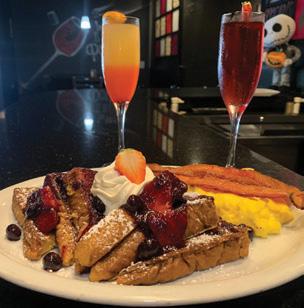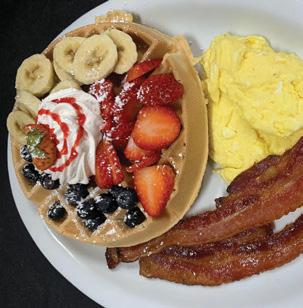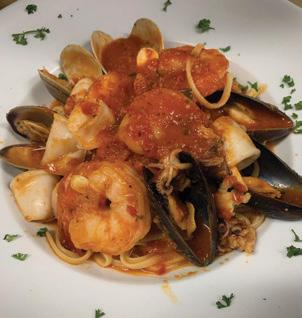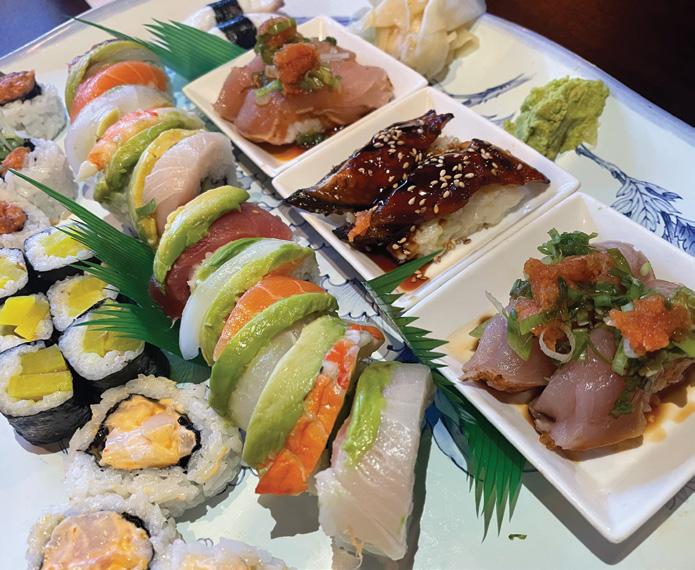
2 minute read
EAT IN SAN PEDRO: SUSHI
by Sanam Lamborn
Fortunately, my introduction was at an established restaurant in the Sawtelle Japantown neighborhood in West L.A. I was sold at first bite.
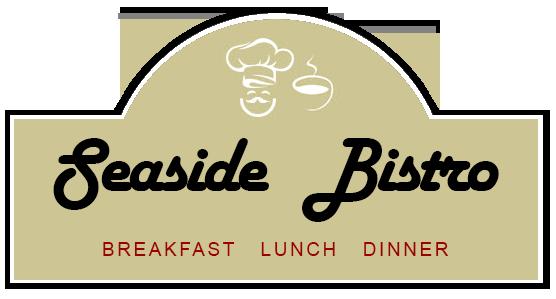
My love for sushi has grown as I have learned more about the art of sushi-making and etiquette. Before getting into the three spots in town that I regularly rotate between, here is a review of basic terminology and etiquette:
• sushi: anything made with vinegared rice, which is the most important ingredient

• sashimi: slice of fish on its own
• nigiri: slice of fish on top of rice
• maki: rolls made with either rice (uramaki) or nori (norimaki) on the outside
• tempura: anything battered and fried served with dipping sauce
• ponzu: a sauce made with soy sauce, citrus juice (often yuzu, which is a delightful type of Asian citrus), mirin (rice wine), bonito (dried fish flakes), kombu (dried kelp), and rice vinegar
Etiquette-wise, wasabi and soy sauce should not be mixed. Ginger slices are for palate cleansing purposes. When eating nigiri, only the fish side is dipped in soy sauce. It’s acceptable to eat nigiri and maki with hands, but not sashimi.
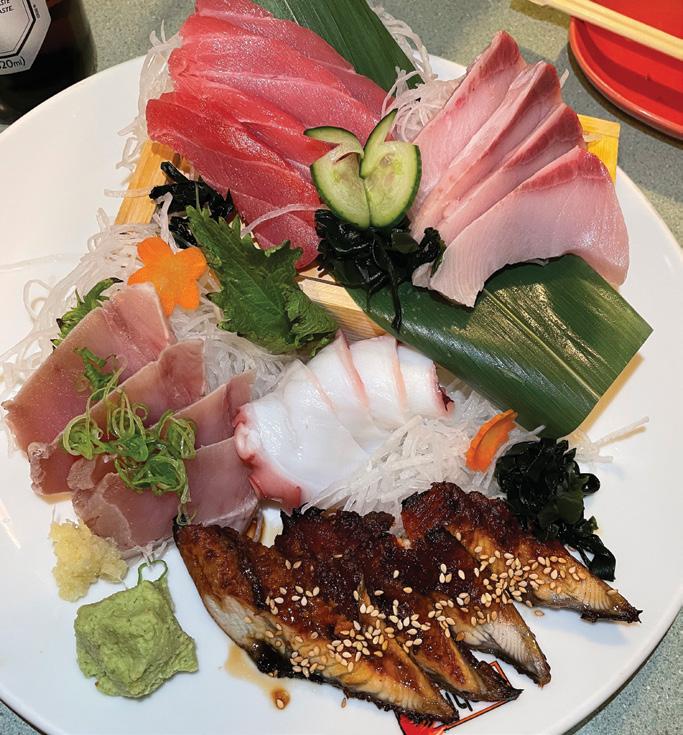
Senfuku Japanese Restaurant (380 W. 6th St.) is truly a family-owned and -operated restaurant. Sushi master Yoshi and his son make the sushi, while his wife handles the rest of the food preparation; her sister handles the front of the house by taking and serving orders.
My husband and I have a main combination that we order each visit. We start with shrimp tempura, then we move on to albacore nigiri, octopus nigiri, spicy tuna roll, and the rainbow roll — a California roll filled with imitation crab, avocado, and cucumber, then topped with slices of tuna, salmon, shrimp, halibut, squid, and avocado. Our “dessert” is unagi, grilled freshwater eel, due to a hint of sweetness from the sauce on top. A bottle of Asahi poured into an ice-cold glass is a must. Additionally, I enjoy ordering their Otokoyama, which is chilled sake served in a wooden cup.
Sushi Tashiro (29050 S. Western Ave.) reminds me of the restaurant in Japantown that got me hooked on sushi. Its minimalist approach makes it feel like an authentic Japanese restaurant. For as far back as I can remember, we have opted for sashimi here because of the quality of the fish. The raw fish is served on a bed of thin raw daikon radish noodles. The daikon is not just for garnish; it’s meant to be eaten with sashimi because it serves as a palate cleanser and has digestive enzymes. We usually order a combination of tuna, albacore, yellowtail, salmon, octopus, and eel. When the fish simply melts in your mouth, it means it’s of good quality and fresh.
Speaking of softness, the octopus is expertly prepared here, leading to a tender slice of tentacle, not the chewy slab some of us fear. When visiting Tashiro, we always start with an order of tempura and Sapporo or Asahi beer.
Jasmine Hana (28150 S. Western Ave.) offers Japanese and Thai food. Noteworthy starters are their shishito peppers and edamame sautéed in a garlic and ponzu sauce, and the spicy tuna on crispy rice.
Here, the rainbow roll is topped with salmon, tuna, albacore, shrimp, and avocado with dollops of smelt egg and sesame seeds. I like the Double Tuna Roll, made with spicy tuna, wrapped with slices of tuna and avocado, then drizzled with yuzu sauce, sesame seeds, and scallions.
The Blossom Yellowtail Roll is made with tuna and cucumbers on the inside and topped with yellowtail and thinly sliced fresh jalapeño, lemon peel, and ponzu sauce, which creates a spicy yet refreshing flavor that is unique and delicious.
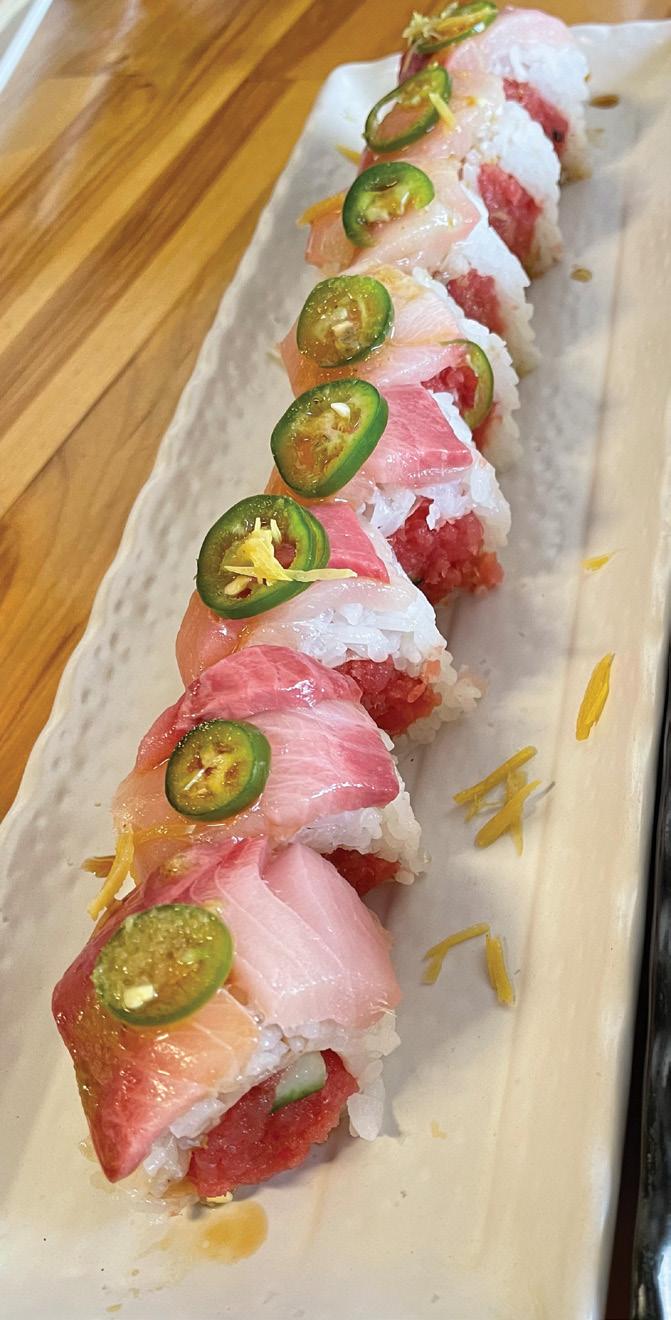
Finally, the Albacore Lover Roll is filled with spicy tuna and topped with albacore, then drizzled with a creamy sesame sauce, ponzu sauce, and crispy onion for some crunchiness. spt
Sanam Lamborn created the Eat in San Pedro Facebook group and Instagram account in April 2020 to entice people to patronize San Pedro’s eateries.


